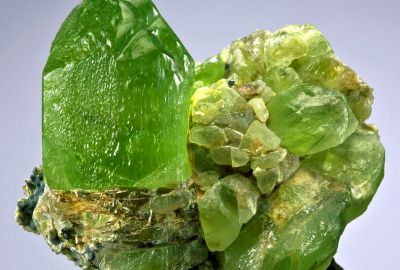Peridot

Peridot is the crystal of the mineral peridotite, an igneous stone of the olivine family. Silicate with impurities of chromium and nickel and iron, from where it gets its characteristic olive-green color. Unlike other gemstones that form in the earth's crust at a depth of up to 15 miles, the igneous peridot is formed in the magma of the earth's mantle at a depth of 30 to 70 miles. It reaches the upper parts of the planet's crust through tectonic or volcanic activity.
The first known peridot mines operated from 1500 BC. on the island of Topazos in the Red Sea, whence the ancient Greek name of the peridot topazion. The island's current name is Zebirget, or St. John's Island, but the mines were closed after World War II. It is speculated that Cleopatra's famous emerald collection included many peridots, the national gemstone of the Egyptians. In Topkapi, the throne of Sultan Murad II is decorated with 957 high-value peridots.
In the cathedral of Cologne, we find the of the three magicians (Three Holy Kings shrine) made of gold and silver wood decorated with enamel and more than 1000 precious stones, among which stands a 200-carat peridot that for many years was believed to be emerald. From ancient times the peridot was with mystical rituals and was used as an amulet of protection from the forces of evil and magic spells. Combined with metal, peridot protects against negative energy, brings calm, soothes irritation, creates security and balance.
It is the stone that unites families, friends and couples, brings a happy mood, removes envy and jealousy. Stone of the 4th chakra of the heart strengthens confidence, soothes and balances the holder's with humans and the earth.
It is the stone of the signs of the Earth, Taurus, Virgo and Capricorn, calms the outbursts of Leo and the tendency of Gemini and Aquarius to flee.

 Ελληνικά
Ελληνικά  English
English